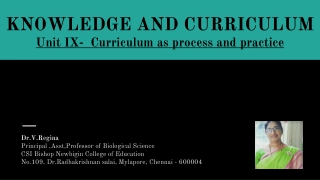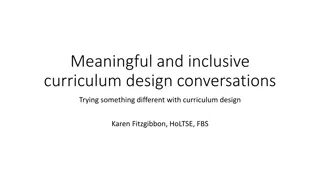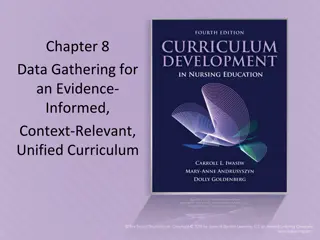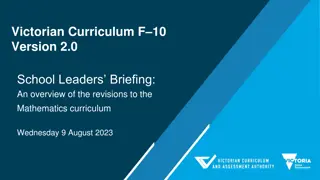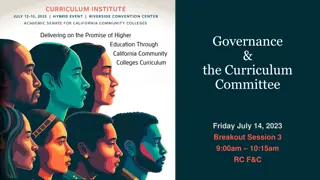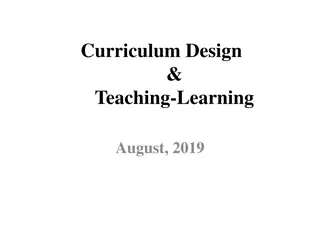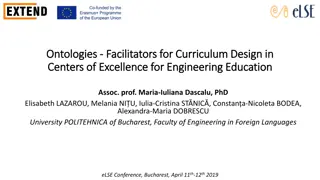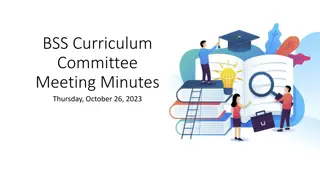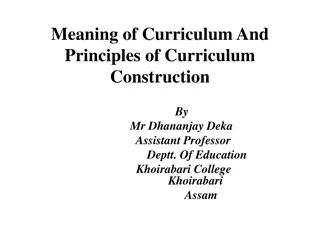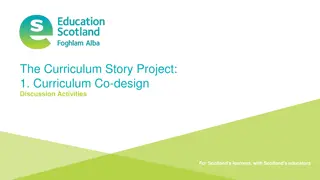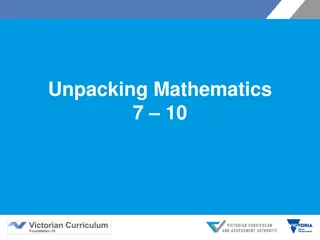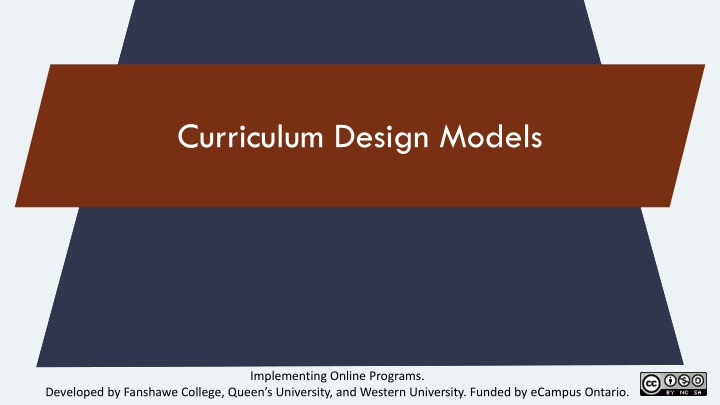
Implementing Online Program Curriculum Design Models by Leading Universities
Explore curriculum design models for online programs developed by Fanshawe College, Queen's University, and Western University. Discover the differences between spiral and linear curriculums, emphasizing mastery, deepening, and integration for effective learning experiences.
Download Presentation

Please find below an Image/Link to download the presentation.
The content on the website is provided AS IS for your information and personal use only. It may not be sold, licensed, or shared on other websites without obtaining consent from the author. If you encounter any issues during the download, it is possible that the publisher has removed the file from their server.
You are allowed to download the files provided on this website for personal or commercial use, subject to the condition that they are used lawfully. All files are the property of their respective owners.
The content on the website is provided AS IS for your information and personal use only. It may not be sold, licensed, or shared on other websites without obtaining consent from the author.
E N D
Presentation Transcript
Curriculum Design Models Implementing Online Programs. Developed by Fanshawe College, Queen s University, and Western University. Funded by eCampus Ontario.
Spiral Curriculum A spiral curriculum is organized around key concepts/skills that are introduced and revisited for deeper understanding or mastery as learners moves through the program of study. Mastery Deepening The topics visited are addressed in successive levels of difficulty. They are introduced to foundations, then build on prior knowledge as they revisit and deepen learning. Integrating Revisiting Introduction Implementing Online Programs. Developed by Fanshawe College, Queen s University, and Western University. Funded by eCampus Ontario.
Spiral Curriculum Every spiral visit can bring: new knowledge or skills relating to the theme or topic; more advanced applications of areas; successive levels of difficulty; complexity or application increased proficiency; or, expertise through further practical experience Mastery Extensions Mastery Deepening Integrating Reinforcement Connections Revisiting Foundations Ideas Introduction Implementing Online Programs. Developed by Fanshawe College, Queen s University, and Western University. Funded by eCampus Ontario.
Linear Curriculum The linear curriculum proceeds in a sequential manner from beginning to end, with the intention of building knowledge, skills, and/or values progressively. This curriculum design is often represented as a pyramid made of blocks. Blocks might represent concepts, ideas, or component skills students are learning. concepts, ideas, skills, content areas Implementing Online Programs. Developed by Fanshawe College, Queen s University, and Western University. Funded by eCampus Ontario.
Linear Curriculum Aha! Moment The curriculum starts with introductory concepts/ideas/skills. Building of Knowledge, Skills Then gradually builds on knowledge and skills over time. This learning might lead to a culminating point, sometimes thought of as the a-ha moment, or capstone. Foundations Implementing Online Programs. Developed by Fanshawe College, Queen s University, and Western University. Funded by eCampus Ontario.
Linear Curriculum The curriculum could also start with a problem. Then build upon the skills required to solve it. Students build on component knowledge, skills with increasing complexity. Grand Problem Implementing Online Programs. Developed by Fanshawe College, Queen s University, and Western University. Funded by eCampus Ontario.
Wheel Curriculum A wheel curriculum is circular. It organizes learning around interconnected themes that intersect to comprise a whole. For some, the wheel may represent the Anishinaabe Medicine Wheel. For others, the wheel represents a hub and spoke. Implementing Online Programs. Developed by Fanshawe College, Queen s University, and Western University. Funded by eCampus Ontario.
Medicine Wheel Curriculum A Medicine Wheel curriculum might be designed in such a way that weaves together intellectual, physical, emotional, and spiritual aspects of learning in ways that are not linear or modularized but interconnected, braided, and cyclical in nature. Four domain learning framework. LaFever, M. (2017). Using the medicine wheel for curriculum design in intercultural communication: rethinking learning outcomes. In G. M. Garc a-P rez & C. Rojas-Primus, Promoting Intercultural Communication Competencies in Higher Education, p. 168-199 doi: 10.4018/978-1-5225-1732-0.ch007 Implementing Online Programs. Developed by Fanshawe College, Queen s University, and Western University. Funded by eCampus Ontario.
Hub and Spoke Curriculum A hub and spoke curriculum might be designed with the central hub or core in mind in relation to the surrounding spokes. The core might be the foundational, shared, inter-disciplinary, intersectional components of learning. While the spokes might be special topics, interdisciplinary inquiries, applications, or related concepts. Shared core Related concepts, ideas, practices Implementing Online Programs. Developed by Fanshawe College, Queen s University, and Western University. Funded by eCampus Ontario.
Modular Curriculum A modular curriculum is structured into distinct modules that are relatively autonomous to one another. Gaps Little to No Link Module 2 Module 1 Module 3 Units have well-defined and precise boundaries. Content is divided into a number of chunks with no links between topics. Topic 1.1 Topic 2.1 Topic 3.1 Topic 2.2 Topic 3.2 Topic 1.2 Students can be summatively evaluated on the unit at the end of that series. Implementing Online Programs. Developed by Fanshawe College, Queen s University, and Western University. Funded by eCampus Ontario.

